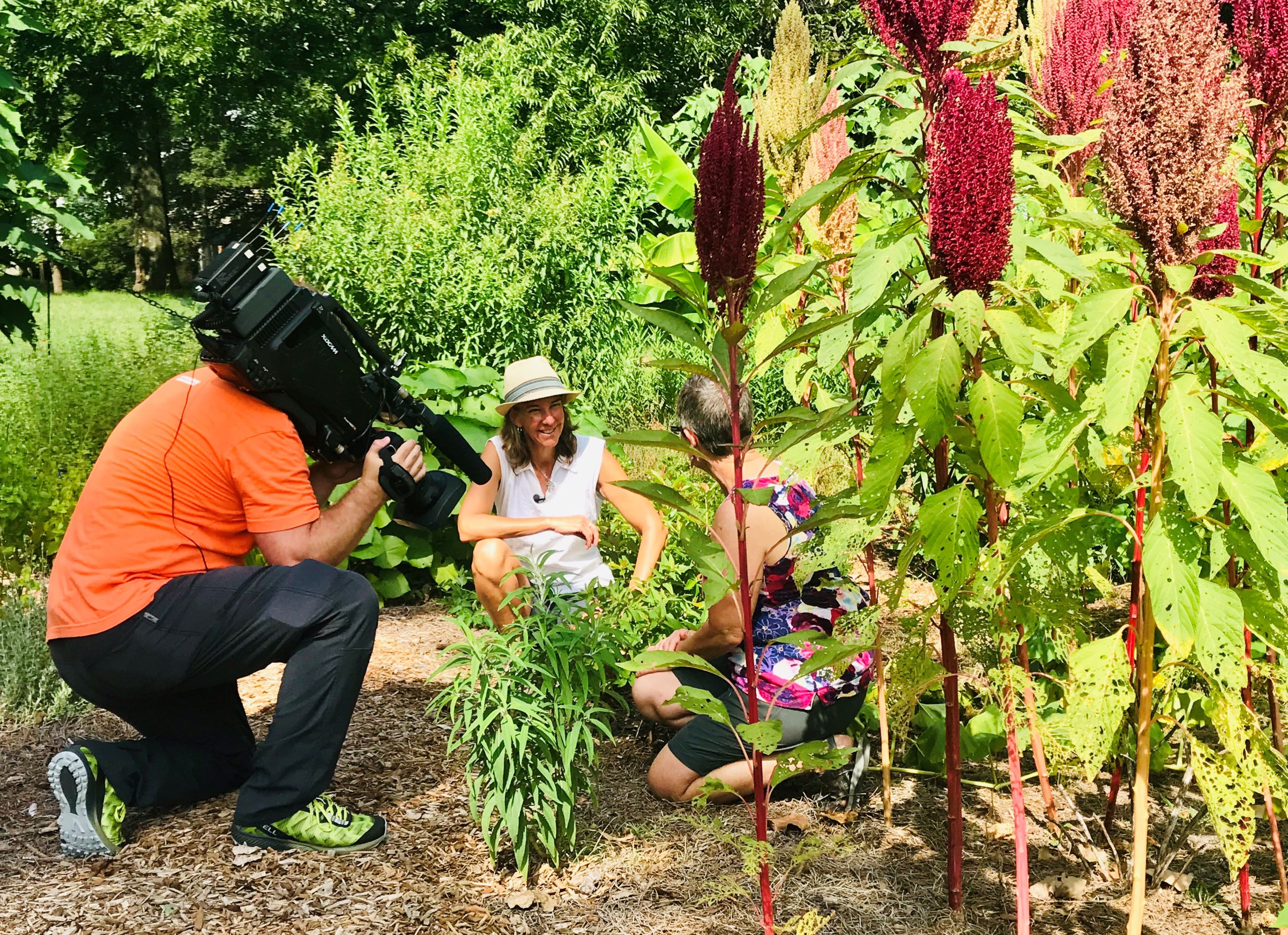Ethnobotanical Garden
The Latin American Ethnobotanical Garden features over 50 species of culturally significant plants from the region. The species housed in the garden reflect CLACX’s particular strengths in Mexico, Central America, Brazil, and the Black Atlantic. The garden contains a number of sages, agaves, as well as exotic plants like cassava, epazote, and night-blooming cestrum. It also features a section of annuals, which contains important food crops such as corn, squash, beans, and amaranth. From May through October, CLACX offers tours of the garden for Vanderbilt courses, student groups, and local school groups; since 2017, over 150 people have toured the garden.
The garden provides an interdisciplinary, hands-on teaching tool for university students, as well as local K-12 educators and their students. It provides a starting point for discussions on a range of topics including relationships between people and plants, diet and health, history and globalization, the importance of indigenous knowledge, and connections between environment, climate change, and biodiversity. The garden has been the focus of a first-year iCommons Seminar taught by Avery Dickins de Girón; students in the course studied uses of plants by indigenous peoples in Latin America and produced descriptions of assigned plants. Their descriptions provided the basis for the plant descriptions in the database.
Explore the Plant Database
Learn more about the garden’s plants, including their scientific and common names, native ranges, cultural significance, medicinal uses, and nutritional uses.
K-16 Educational Outreach
The garden is part of CLACX’s outreach program for K-16 educators and their students in Davidson County and beyond. CLACX has hosted formal professional development activities featuring the garden. The first (September 2017) highlighted plants native to Mesoamerica and important in Aztec culture: chia, amaranth, and chocolate. The workshop was attended by 30 educators and included presentations on the use of these plants in the pre-Colombian and colonial periods and current research on plant genetics that seeks to improve the nutritional efficiency of beans and amaranth. In 2019, 32 educators from across the country came to Nashville for a week-long professional development institute and toured the garden to learn about the medicinal and culinary uses of the plants. The garden also serves as a lending garden for local schools that wish to incorporate these plants into their gardens.
Tours of the Garden
CLACX regularly offers tours of the garden for faculty-led courses at Vanderbilt, student organizations, and local school groups. We also encourage self-guided tours; each plant nameplate displays a QR code that links to our database. Learn more about visiting the garden.
The garden has been featured on NPT’s Volunteer Gardener in 2020; those virtual tours and other short videos on individual plants are available here. For more information or to schedule a tour, please email avery.dickins-degiron@vanderbilt.edu.
History of the Latin American Garden
Working with Vanderbilt’s Landscape Architect Robert Waits, horticulturist Laura Barker, and Grounds Manager Danny McKissack, Executive Director Avery Dickins de Girón established the garden in 2017. Students, faculty, staff and the community took part in the foundational planting on May 10. The majority of the plants housed in the garden were generously donated by the Latin American and Caribbean Studies Institute at the University of Georgia from their ethnobotanical garden that was established by anthropologists Brent and Elois Ann Berlin nearly 20 years ago. CLACX Regional Faculty Affiliate Matthew Blair at Tennessee State University donated the amaranth and regularly contributes to educational activities for the garden. Jonathan Ertelt, the former manager of Vanderbilt’s greenhouses, has provided botanical and gardening advice, as well as storage for selected plants during the winter.
Funding for the Latin American Garden
The garden was established with funding from the U.S. Department of Education National Resource Center grant in 2017, and individual donations to CLACX support the purchase of annual plants and supplies. In 2020, CLACX was awarded a grant from the Stanley Smith Horticultural Trust to purchase permanent nameplates, expand signage, and create a database of plants housed in the garden.
Location
The Latin American Garden is located between Natchez Field and 31st Avenue North, adjacent to Lot 73A, and visible from Blakemore Avenue. Explore the map here.
Follow the Latin American Garden on Instagram for real-time updates and interesting facts about the plants.
Educational Resources
Explore our educational resources from the garden, including video shorts, articles for young readers, and other curricular materials (in both English and Spanish).
Media Features
- Growing Your Own Food in Nashville with This Is Nashville (July, 2022)
- Latin American Ethnobotanical Garden Tour with Nashville Public Television’s Volunteer Gardener (May 2021)
- Medicinal Plants Tour at the Ethnobotanical Garden with Nashville Public Television’s Volunteer Gardener (May 2020)
- Discovering the Latin American Garden: Inside ‘Dores Student Blog (September 18, 2017)
- Celebrate the Opening of Vanderbilt’s Latin American Garden September 7: Vanderbilt News (September 3, 2017)
For inquiries regarding the garden, contact CLACX Executive Director Avery Dickins de Girón.
